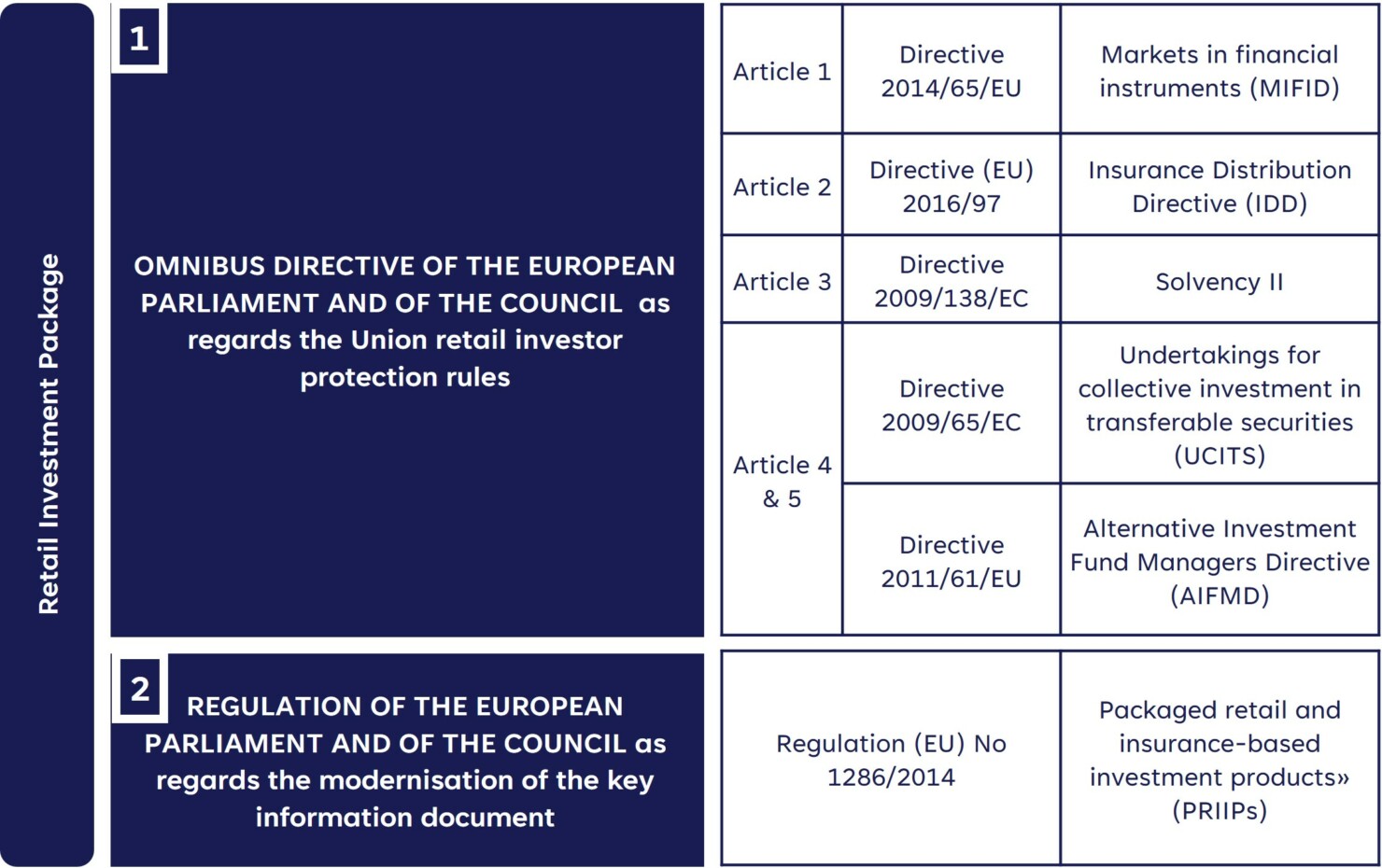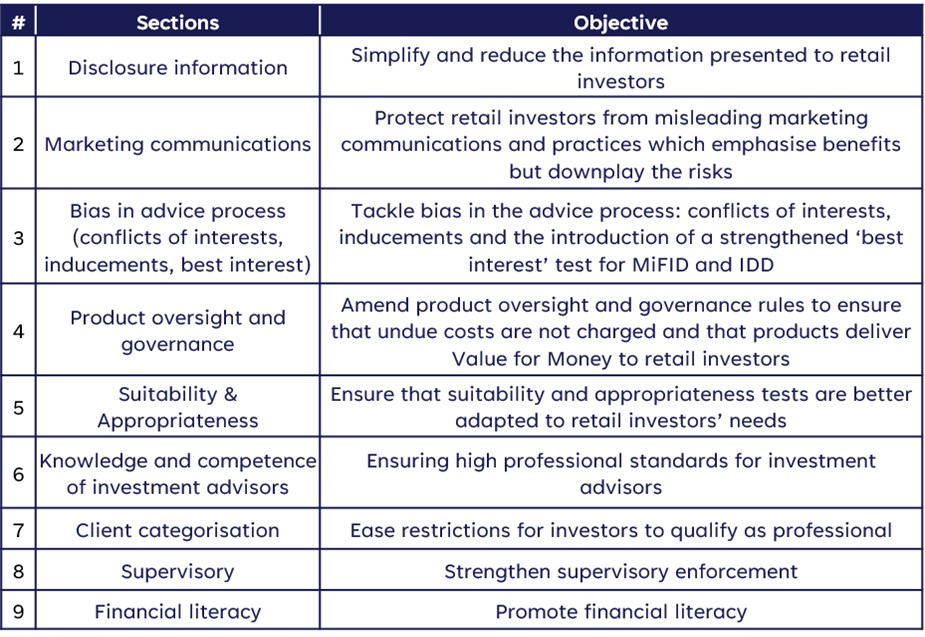Retail Investment Strategy
Retail Investment Strategy final objective is to streamline and modernize the applicable rules to place customers’ interests at the centre of retail investing and ensure that retail investors receive the same treatment and protection regardless of the investment products, marketing and distribution channels
Retail Investment Strategy — Smooth transition or model disruption ?

What the retail investment strategy aims to achieve ?
One of the key three objectives of 2020 Capital Market Union (CMU) action plan was « to make the EU an even safer place for people to invest their savings in the long term ».
In that context, on 24 May 2023, the European Commission (EU) released a Retail Investment Package which aims to improve the framework so that consumers are empowered to take informed financial decisions and to get adequate protection.
The package is amending the current legislative structure with the objective to :
- Increase retail investors’ participation in EU capital markets
- Enhance trust and confidence in capital markets
- Help retail investors to achieve better outcomes
- Contribute to the wider EU economy
What are the impacts on current legislative framework ?
Retail Investment package is made of two parts:
- An omnibus directive (Retail Investment Strategy) that revises multiple segments of existing legislation : MiFID, IDD, Solvency II, UCITS, AIFMD
- An amending regulation : PRIIPs


Thematics are spread over 9 sections
What is the regulatory timeline ?

How we can help ?
-
Awareness
Understand RIS, Map RIS scope with business model, Identify stakeholders & decision makers, Raise awareness
-
Impact Analysis
Identify, Analyze and qualify impacts of RIS (business model, revenue model, operating model, products universe …)
-
Gap Analysis
Review strategic options, Take strategic decisions, Perform gap analysis
-
Action Plan
Build action plan, Build implementation roadmap, Assess budget and resources
-
Implementation
Project management, Build target (business requirements specifications operational processes, control framework change management…)